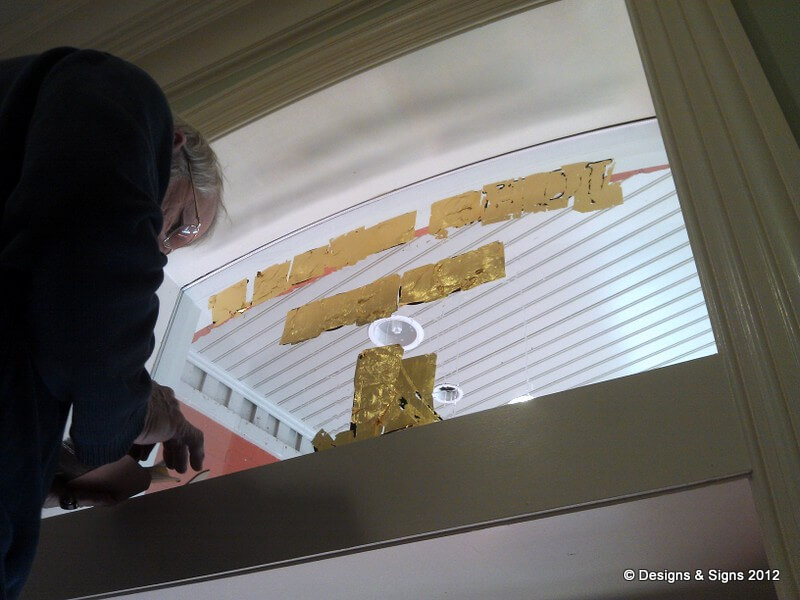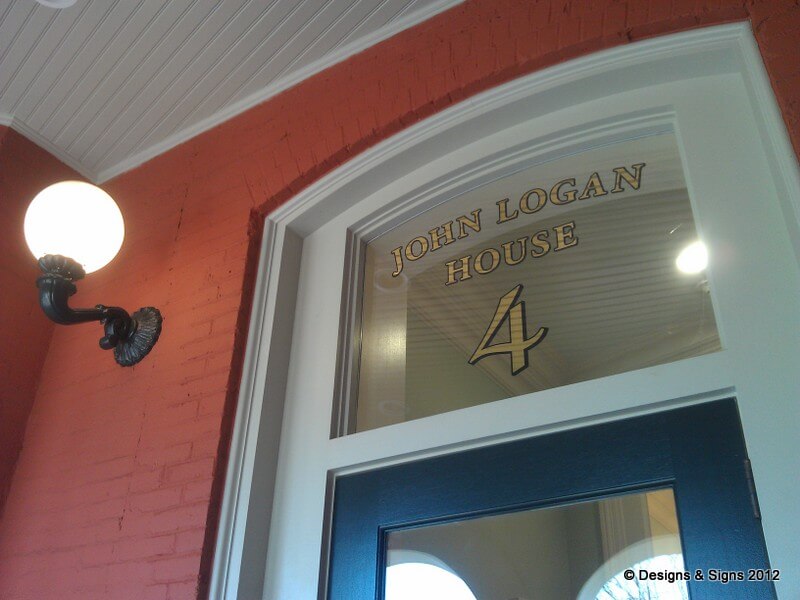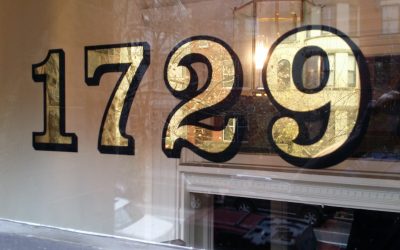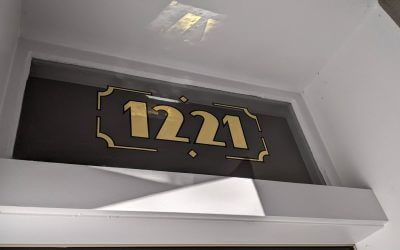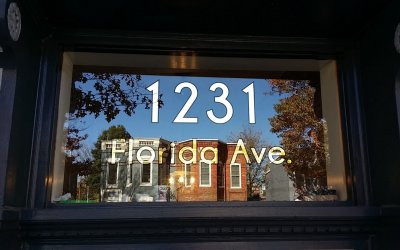Indeed, we will assist with your Historic Home Renovations and traditional Glass Gilding Renovations! Glass gilding at John Logan House in Washington, DC. Builders completed this historical renovation in 2012. We always apply gold leaf the old-fashioned way, by hand, just as one would find on any such property many years ago. In addition, Designs & Signs offers a variety of gold leaf signs and services. We also restore historical gold leaf signs and gilded antiques. Don’t hesitate to get in touch with us if you have a gold leaf project to consider.
See the many phases of a glass gilding project below
John A. Logan (1826–1886) – Quoted from Wikipedia
As a second lieutenant in the Mexican–American War, John A. Logan (1826–1886) attended the University of Louisville before becoming a lawyer. Logan was born in Illinois and died in Louisville in 1886. Originally a Democrat, he was elected to state office, then to the United States Congress in the House of Representatives. While Logan denounced what he perceived as extreme views on both sides of the Civil War, he eventually joined the Union Army during the First Battle of Bull Run. Upon resigning from Congress, he became the colonel of the 31st Illinois Volunteer Infantry Regiment. The war saw Logan wounded twice, and he was considered an outstanding commander. The victory at Fort Donelson earned him the title of brigadier general.
Logan and Union Victories
During the war, Logan was the military governor of Vicksburg’s district and played a crucial role in Union successes. Logan succeeded General James B. McPherson as commander of the Army of Tennessee but was relieved by General Oliver O. Howard after becoming too involved with the 1864 presidential election. Upon leaving the army in 1865, he began a career in politics.
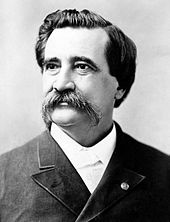
An accomplished Republican Senator runs for President
Logan served as a Republican in the U.S. House of Representatives and later in the Senate. Logan’s presidential campaign in 1884 was unsuccessful, losing the election narrowly to Senator James G. Blaine. However, as a member of the House of Representatives, Logan was considered one of the most vocal advocates for veterans. In 1868, he helped organize the Grand Army of the Republic (GAR) and the Society of the Army of the Tennessee (SAT), as well as the first official Memorial Day (then called Decoration Day) holiday in the United States.
Logan’s widow provides direction
The SAT began erecting a monument to Logan as soon as he passed away in 1886. The organization lobbied Congress for Logan’s memorial with the GAR and Mary Logan, Logan’s widow. As a result, Washington, D.C., would have its second equestrian monument commissioned by the SAT, after Major General James B. McPherson. Congress approved the construction of the memorial by an act on March 2, 1889. Then representatives selected a sculptor and a site for the statue using a memorial commission. Commission members asked Augustus Saint-Gaudens for his recommendation. He suggested Franklin Simmons (1839-1913), an American artist residing in Rome. Simmons sculpted several Civil War monuments, which include the Peace Monument in Washington, D.C.
The commission of Simmons
Before selecting Simmons’s design in December 1892, the commission considered models by several sculptors. Mrs. Logan admired Simmon’s stance and thought to place the monument on a bronze base instead of granite-like most other monuments in the city. Mary liked that Simmons and members of the commission followed her recommendations for the reliefs carved into the statue base. The SAT paid nearly $13,000 to Simons, and the federal government provided the rest. Simmons experienced more difficulty than he anticipated since the Logan statue is his only equestrian sculpture. He asked for several extensions as a result of this in 1896. Richard Morris Hunt, the architect who designed the base, was compensated extra money by founder Fonderia Nelli to work around the clock on it.
Sources: Wikipedia, Logan Museum

